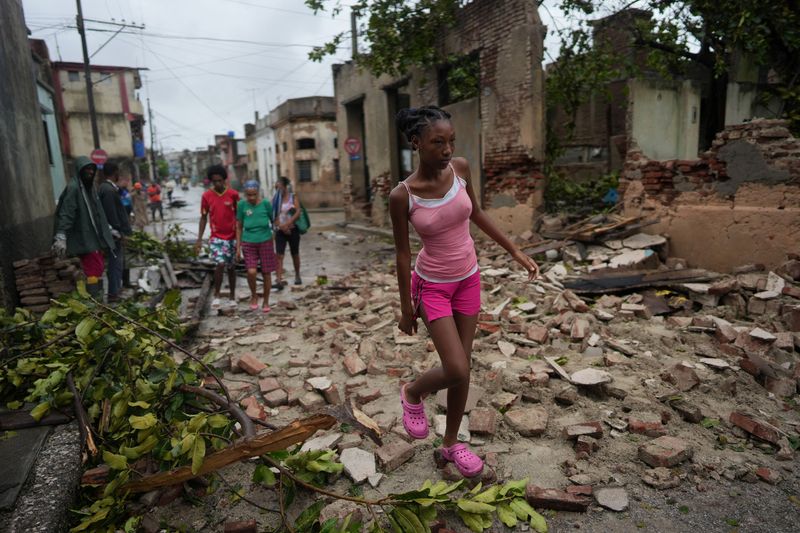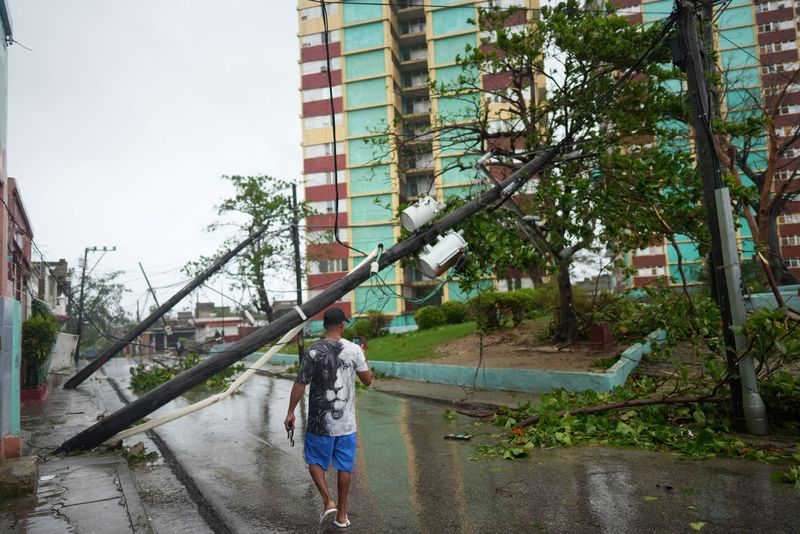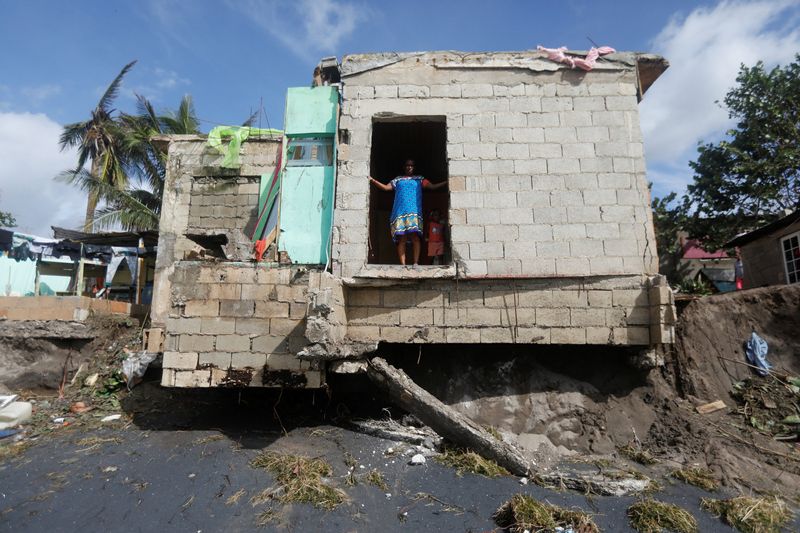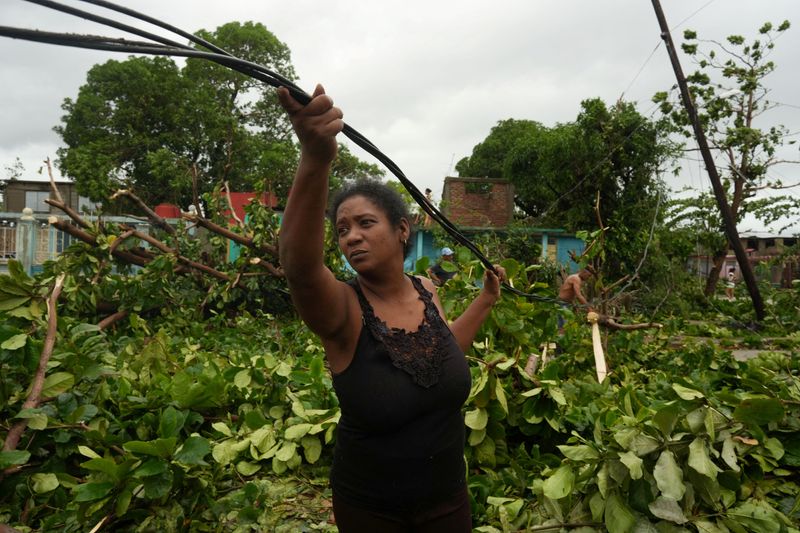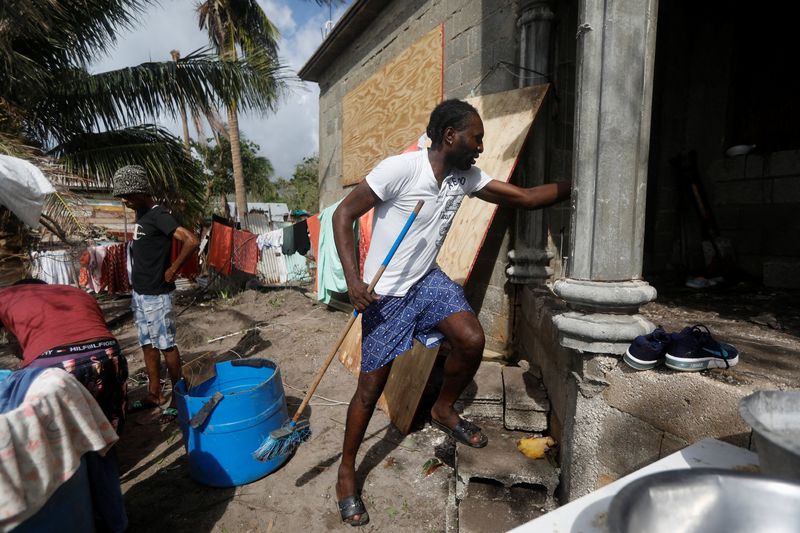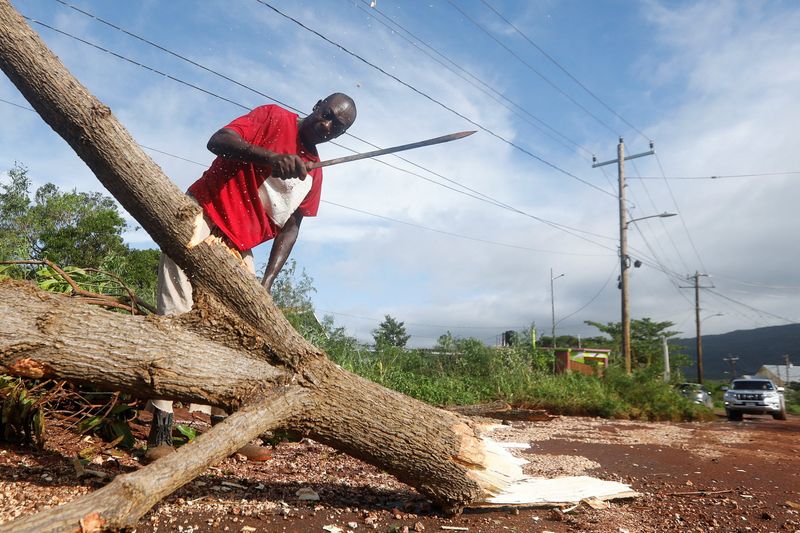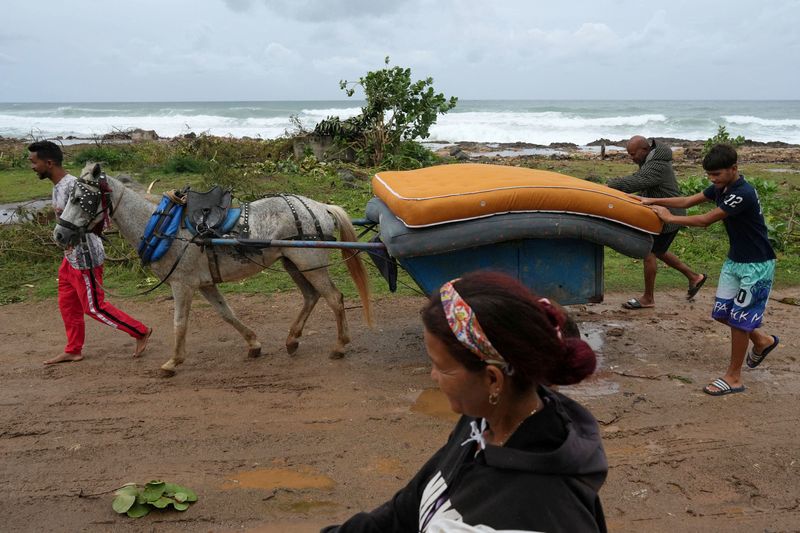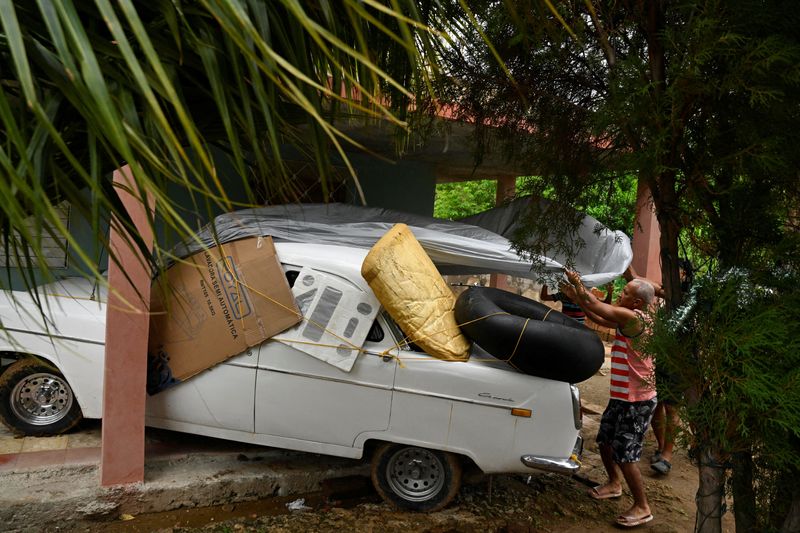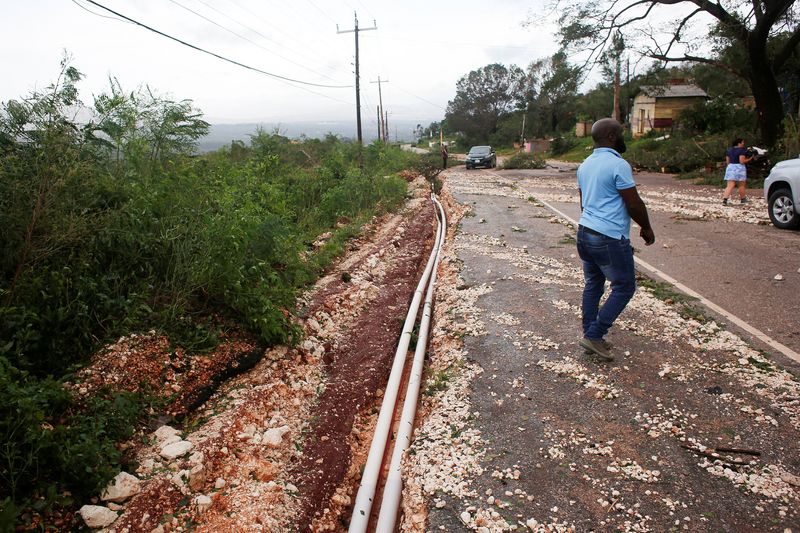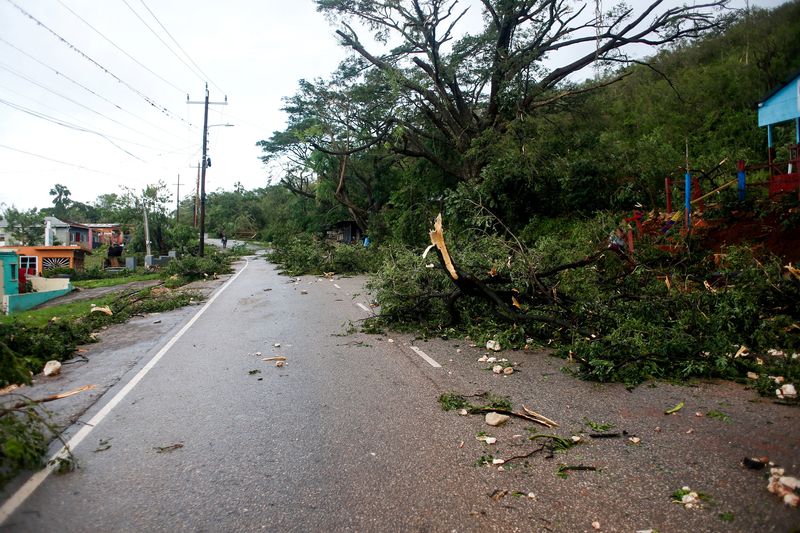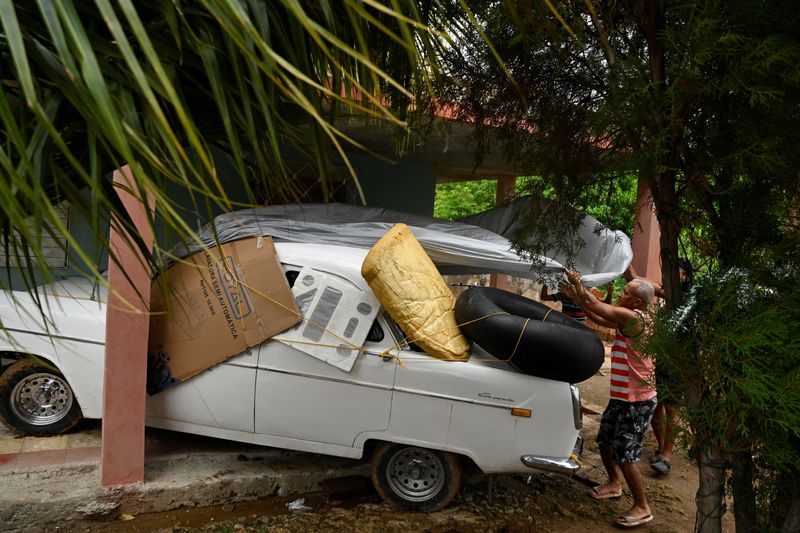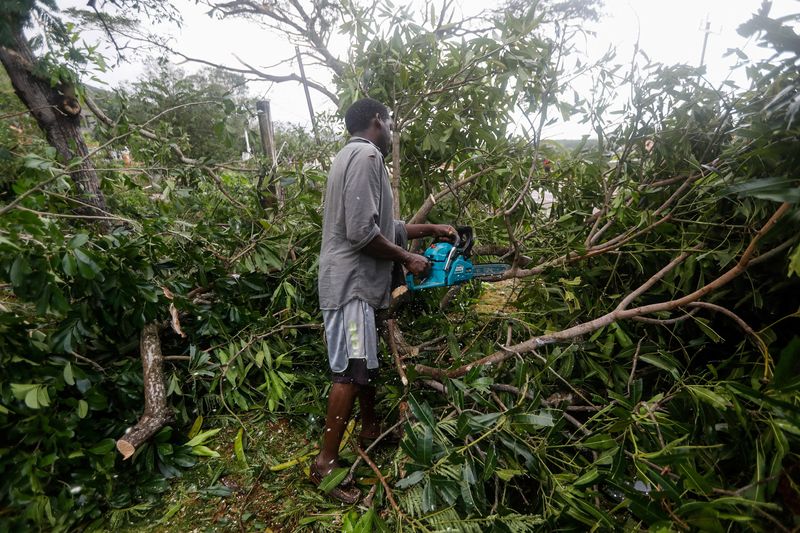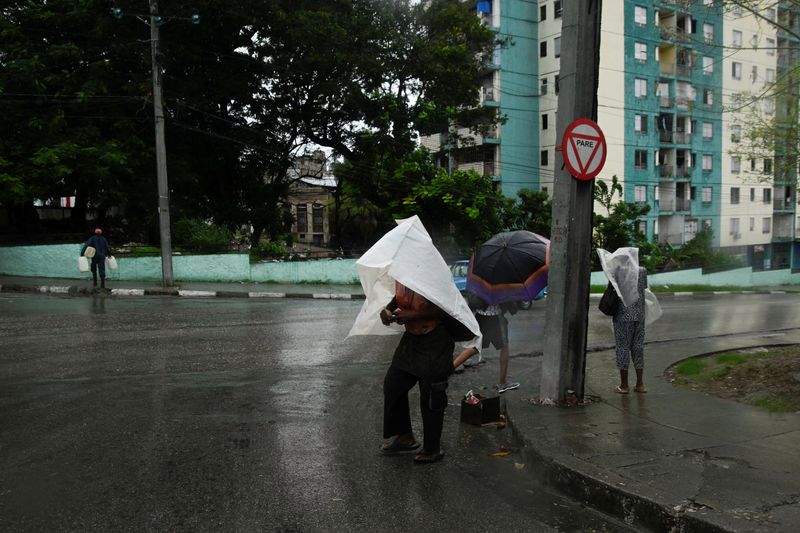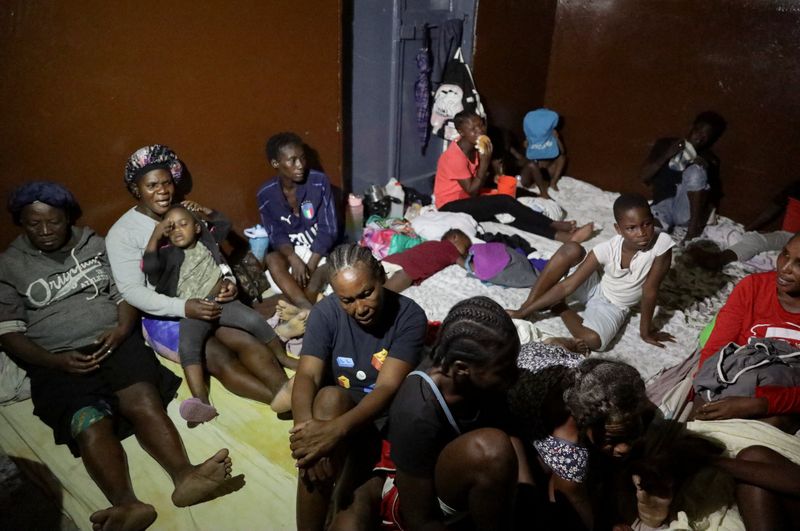By Dave Sherwood
HAVANA/KINGSTON (Reuters) -Hurricane Melissa barreled north of Cuba on Wednesday after thrashing the city of Santiago and isolating hundreds of rural communities while unleashing devastation in Jamaica and drenching Haiti, where reports surfaced of more than two dozen fatalities.
Melissa slammed into Jamaica as a record-breaking and destructive Category 5 storm with sustained winds of 185 mph (298 kph) but it had been downgraded to a Category 3 when it hit Cuba with winds of 120 mph, the U.S. National Hurricane Center said.
The storm moved north of the Caribbean’s largest island on Wednesday afternoon and had been downgraded to a still dangerous Category 2 storm, threatening the Bahamas and Turks and Caicos with damaging winds, rain and storm surge.
At least 241 communities remained isolated and without communications following the storm’s passage across Santiago province, according to preliminary local media reports, affecting as many as 140,000 residents.
“Life-threatening storm surge, flash flooding and landslides, and damaging winds are ongoing this afternoon,” the NHC said.
Across eastern Cuba, authorities evacuated around 735,000 people as the storm approached. Most remained in emergency centers.
Cuban President Miguel Diaz-Canel said Cuba had suffered extensive damage and warned residents against letting down their guard as rains continued to lash the region.
JAMAICA, HAITI ASSESS DAMAGE
The island shared by Haiti and the Dominican Republic has faced days of torrential downpours leading to at least four deaths, authorities there said.
Another 25 people died in Petit-Goâve, Haiti, after Melissa’s rains swelled a river’s banks, the Associated Press reported, citing the local mayor. The NHC warned that catastrophic flash flooding and landslides were expected on Wednesday.
Jamaica’s government gave an “all clear” to begin recovery efforts after Melissa, the strongest storm ever to directly hit the island, blasted the island’s western region, demolishing homes, knocking down swaths of trees and washing out roadways.
About 77% of the country was without electricity, the government’s information minister said on Wednesday morning. The capital Kingston was spared the worst damage, and authorities hoped to reopen its main airport on Thursday.
Authorities said there were no reports of deaths as of Wednesday morning, but said fatalities were possible given the extensive damage.
In southwestern Jamaica, the parish of St. Elizabeth was left underwater, an official said, with more than 500,000 residents without power.
“The reports that we have had so far would include damage to hospitals, significant damage to residential property, housing and commercial property as well, and damage to our road infrastructure,” Jamaican Prime Minister Andrew Holness said on CNN after the storm passed.
“It was so crazy. Like a freight train trying to come to a stop for eight hours,” said Journie Ealey, 34, a U.S. tourist on vacation in Jamaica, reached by phone. “I’ve never experienced anything like this before.”
Meteorologists at AccuWeather said Melissa ranked as the third-most intense hurricane observed in the Caribbean, after Wilma in 2005 and Gilbert in 1988 – the last major storm to make landfall in Jamaica.
Scientists say hurricanes are intensifying faster with greater frequency as a result of warming ocean waters caused by greenhouse gas emissions. Many Caribbean leaders have called on wealthy, heavy-polluting nations to provide reparations in the form of aid or debt relief to tropical island countries.
“Our country has been ravaged by Hurricane Melissa but we will rebuild and we will do so even better than before,” Prime Minister Holness said early on Wednesday.
U.S. President Donald Trump said on Wednesday he was prepared to assist Jamaica’s recovery. The State Department said it would send search-and-rescue teams.
CUBA HIT
The storm’s center, churning with violent wind gusts over 125 mph and heavy rain, slammed early on Wednesday into Guama, a rural, mountainous area 25 miles (40.2 km) west of Santiago de Cuba, the island’s second-most populous city.
The storm pressed on north-northeast across eastern Cuba. Authorities had shut down power to virtually all of eastern Cuba, evacuated vulnerable areas and asked residents to shelter in place in the provincial capital Santiago, a city of 400,000 people.
By Wednesday afternoon, residents of Santiago began to venture onto the street to survey damage along flooded and debris-littered roads lined with fallen trees and power lines. Many homes had lost roofs in the powerful morning winds, and heavy rains had caused rivers to overflow their banks, isolating communities in rural areas.
Authorities reported widespread flooding of lowland areas early on Wednesday from Santiago to Guantanamo, where upward of 35% of the population had been evacuated. Officials also warned of severe impact on crops ahead of the Northern Hemisphere’s winter growing season.
The timing could hardly be worse for the communist-run Caribbean island, already suffering from food, fuel, electricity and medicine shortages that have complicated life, prompting record-breaking emigration since 2021.
President Diaz-Canel said Cuba had mobilized 2,500 electric line workers who would begin recovery immediately following the storm’s passage across the island later on Wednesday.
(Reporting by Dave Sherwood in Havana, Zahra Burton in Kingston, Sarah Morland and Brendan O’Boyle in Mexico City, David Ljunggren in Ottawa, Emma Farge in Geneva and Anmol Choubey and Ishaan Arora in BengaluruWriting by Andrew Heavens and Brendan O’BoyleEditing by Peter Graff and Matthew Lewis)
